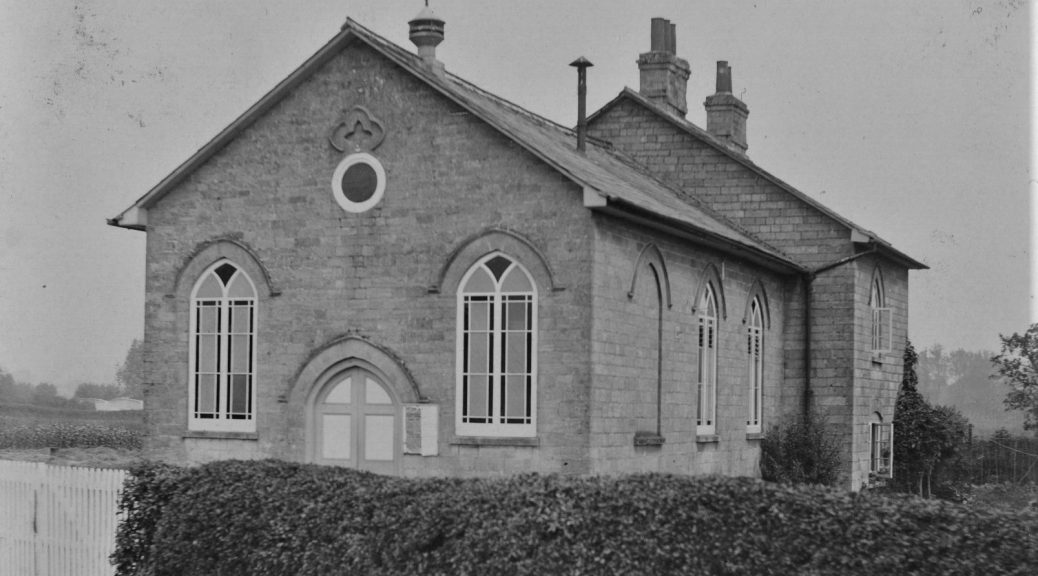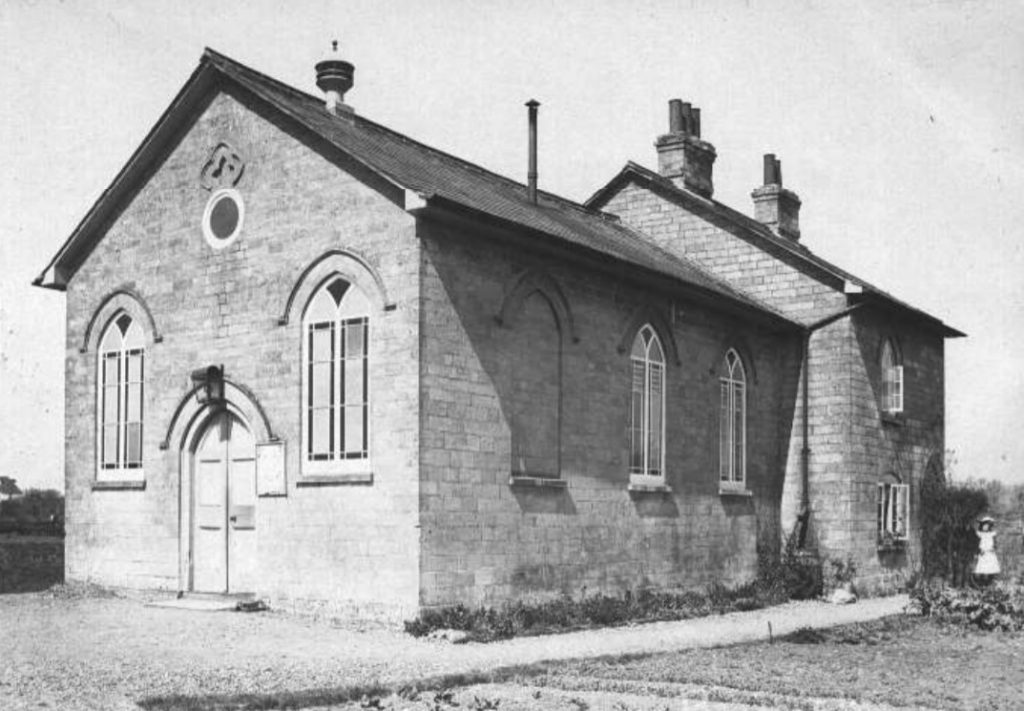
Brimpton History: Baptist Church & School Room
The following is an extract from “A Century of Witness”, a 1944 book by Mr Leslie Wyeth (a Baptist Minister who often preached in Brimpton’s Baptist Chapel) goes into great detail about the origins of the church and school room. The extract was transcribed in the village book, ‘The Brimpton Story’ in 1999.
“In 1831 a corn merchant called Jabez Vines took a lease of Brimpton Mill. He was a member of the Baptist Church in Reading and Mr Wyeth tells us that he found a great dearth of religious instruction in the parishes of Brimpton and Wasing. This weighed upon his conscience until at last, divinely moved, he licensed the mill house for public worship. Numbers increased, children were invited and a Sunday School was formed. “Christ’s poor were fed with the bread of life and the milk of human kindness”. Unfortunately “influential persons did all they could to prevent both adults and children from attending, and the feud between the Established Church and Non-Conformity waxed bitter in those days”.
In 1837, however, persistent effort and prayer prevailed, and Mr John Goddard, a yeoman farmer drawn to the worship at the mill, provided a piece of land on which a Meeting House and Manse were built. After a slow start, when it looked as if the congregation might wither away, things took a decisive turn for the better when it happened that “touring the village Bethels in the district was a noble and gifted young preacher, Charles Rixon. This valiant knight of the Holy Ghost came to restore the years that the locusts had eaten, to revive the spirit of the downcast, and to be the founder under God of the present Church fellowship”.

The first baptisms took place on August 2nd 1843 in the river Kennet near the mill. Charles Rixon himself was among the four candidates, and after the baptism, “from the river resplendent with vision they and their friends repaired to the Meeting House, where… in solemn covenant the Church was formed”. Two years later Rixon was ordained pastor of the Chapel and the church began to grow. “Through him, unlettered and unlearned, the Spirit spoke. Yet how great the things which were wrought in Brimpton by him”. Mr Rixon, like his successors, was unpaid for his work and “the strain of continued manual and mental labour, together with his spiritual wrestling with souls, proved too much for his strength. The noble spirit burned out its mortal frame, and worn out with his labours he passed to his rest at the early age of 39 years”.
It was seventeen long years before Brimpton again had its own Baptist pastor and inevitably in the interim numbers dwindled; but in 1876 the diligent Mr Skelt became pastor and the glorious work sped on. There followed a succession of pastors with varying spiritual gifts, under whose guidance the fortunes of the community waxed and waned. 1902 was a lean time. “The membership declined to ten persons and many felt that the glory had departed”. Mr John Timms, then secretary, wrote in 1905 to the Berkshire Baptist Association to ask for help, and it was arranged that student pastors from Regent’s Park College should minister to the congregation. This arrangement proved so successful that in a few years it became necessary to build a separate building to house the Sunday School and this was opened on January 21st 1914. From 1926 – 1935 student pastors from Spurgeons College replaced those from Regent’s Park, and it was after them that Mr Wyeth was asked to become honorary pastor and “to feed Christ’s flock in this sequestered village”. He continued as Brimpton’s honorary pastor until the 1980s and in his time the Baptist community in Brimpton was as strong as it had ever been.”

Between the two World Wars the chapel was a focus for much social activity in the Parish. There were Chapel Suppers, Coffee Suppers and social occasions at which the children sang and recited. There were Sunday School picnics in the Bowden’s field and several temperance societies – Christian Endeavour for the adults, and for mothers with young children the “Little White Ribboners”: a sort of mother-and-toddler group in which the mothers pledged that their children would not drink. There was also a Cradle List of children too young to speak for themselves. The Baptist Chapel was so popular at this time that many children walked from as far as Colthrop and Brimpton Common in order to go to its Sunday School.